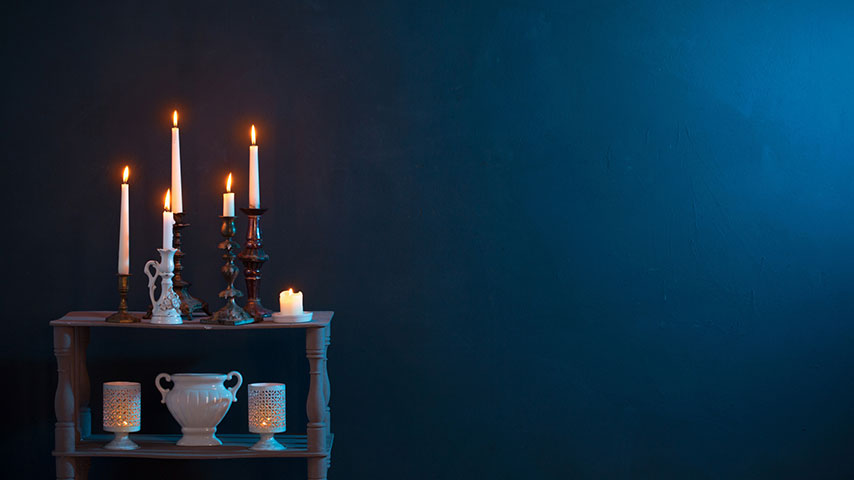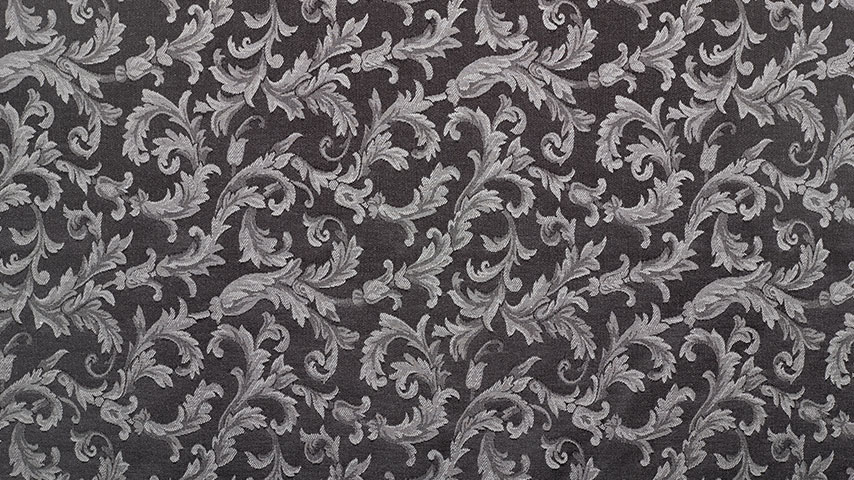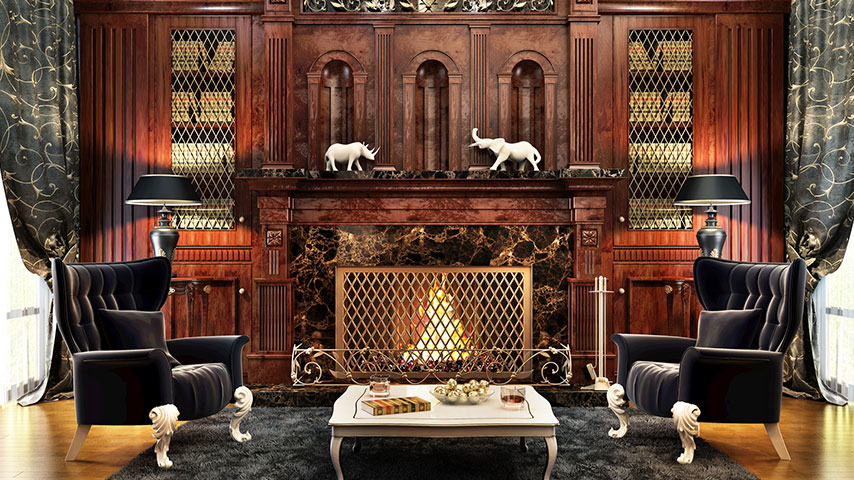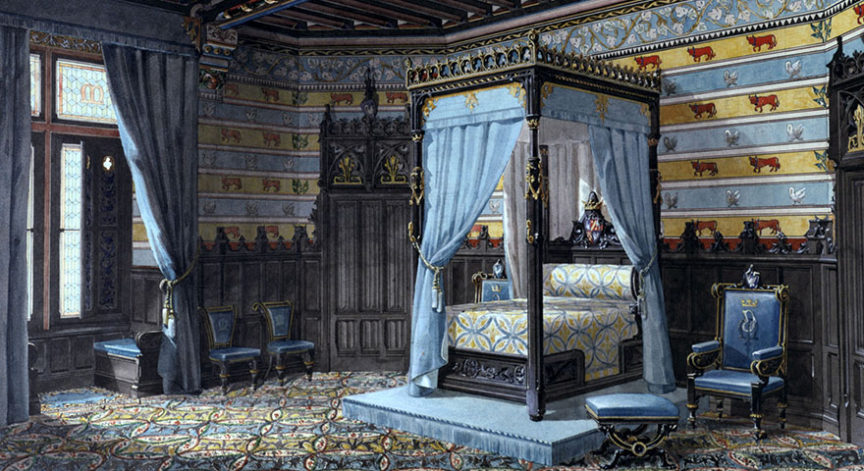A modern Gothic interior should capture the timeless class and elegance of the High Middle Ages. This period is an era where human architecture transcended functionality and focused on form, creating some of the most impressive structures our world has ever seen.
The Canterbury Cathedral and the Abbey Church of Saint-Denis are remarkable examples of Gothic character. Their intricately designed spires and arched interiors have become seminal works for later Renaissance buildings. You can still see Gothic influences in minor cathedrals today in places like Prague, Spain, and Russia.
Now that we live in the age of condos and space-saving furniture, designing a Gothic interior can summon mental images of Dracula’s castle: bare brick walls, stained windows, and even a creepy moat, but none of those are very accurate. While it’s true that Gothic interiors once had ornate, spiky chandeliers jutting down from the ceilings and torches lighting stone walls, they have evolved to evoke drama, function, and excitement for homeowners and their houseguests in modern times.
A Gothic interior in 2020 should balance regality and accessibility using arches, lights, and ornate accents on nearly every wall and window. It should not give off the feeling of being stuck in a haunted mansion. Old Gothic spaces are venues where holy and influential people pondered the omniscience of God, which is why there are numerous Gothic churches and castles and very few Gothic mansions and houses built in the era where the style was popular.
A modern Gothic interior can be breathtaking when done right, but it’s one of the most challenging styles to achieve. So, if you don’t know where to start, here are eight ways to pull off a Gothic interior design with class and charm.
1. Find Inspiration
Have you ever played the video game the Sims? Many homeowners today have gotten their first taste of architectural inspiration from designing their own houses in that game.
There are more than a few interior designers who got their start by finding a house design online and then creating their revisions of it in the Sims. You can apply the same approach to your interiors.
You can still find many Gothic structures in the United Kingdom. If you prefer Late Gothic or Early Renaissance aesthetic, you can find many well-preserved Gothic buildings in Paris, Prague, and Spain. Finding inspiration for your new interior design is key to finding the themes, ideas, and motifs you want to communicate.
When you see a design that interests you, you can conceptualize a look that you can later modify using a different paint color, carpet color, and matching furniture. For example, if you look at the Notre Dame cathedral, you will notice a large circular stained glass window that serves as its interior’s centerpiece. You can emulate the same look by installing arched windows that stretch from the floor to the ceiling in your living and dining room, which will let a lot of natural light inside your home.
2. Do You Want a Victorian Interior?
One of the most popular trends in Gothic architecture today is Victorian-style interiors. A Victorian interior is characterized by bright, intricate rooms that diverge from the imposing pillars and dimmed floor-to-ceiling windows of the Early Gothic era. Victorian rooms have large fireplaces, wooden beams and rafters, and intricately designed windows with blooming flowers and trefoils as focal points.
Victorian architecture was the predecessor to Edwardian architecture, which is an era where people focused less on the revival of the ornateness of the Gothic ages and more on large windows and bright paints. If you want your home to feel somber and regal without that glum and dark atmosphere that Gothic interior designs are known to evoke, try going for a Victorian interior. You will not be disappointed.
3. Get Gothic-Style Furniture

Furniture in the Gothic style will look like remnants from an old church. Characterized by heavy dark woods that promote a sense of sturdiness and decadence, Gothic cabinets, headboards, and chairs have ornate designs that look like they’ve lasted centuries and will last for centuries more. They usually have elegant spires that adorn their edges, and arches on their backs that make you feel like they belong in a cathedral.
4. Paint Colors That Make a Room Look Gothic
Gothic paint colors are usually dark and rich, like black, ruby, gold, and purple, and evoke a sense of boldness and extravagance. Many Gothic homes include vines and hanging flowers to accent their inner walls.
Modern Gothic designers like implementing heraldic symbols and other design elements using stencils so the Gothic interior walls won’t look so stark. They commonly coat walls with flat colors and then coordinate them with tapestries and detailed fabrics. Stained glass windows are generally fenced-in with wrought iron bars, creating that distinct feel of hidden beauty and exclusivity.
5. Getting That Dramatic Flair

Gothic architecture isn’t shy about its opulence and maximalism. Once upon a time, popes, deacons, and kings were thought to convene with God under Gothic archways and buttresses.
Now that the Gothic style is accessible to everyone, inspire that same ardor and drama that the great architects once captured, and make your interior look authentic. Gothic rooms of the past featured stenciled patterns on bare walls, which you can achieve today using wallpapers.
Choose an elegant wallpaper with repeated, detailed graphics in a rich, dark hue to give your room a sense of regality and flow. Utilize black and near-black colors in moderation to avoid falling into the Hollywood stereotype of a dungeon-like Gothic mansion.
Use a combination of dark blue, burgundy, dark forest-green, and ruby red, so your rooms don’t all look the same. Think of the Lannister bedrooms in Game of Thrones and try to achieve the same color palette with slight thematic variations.
6. Choosing the Right Fabrics
Plants, portraits, and fabrics lined the walls and floors of old Gothic interiors. If you don’t have the money to buy a few renaissance-age paintings, you can decorate your room just as well by finding the right fabric colors and patterns for rugs, chairs, and throw pillows. Look for a formal but expressive design that will give your room a sense of timelessness and grandeur that modern minimalism cannot provide.
Velvet, satin, and silk fabrics in bold, dramatic colors will work great for your carpets, couches, and chairs. Velvet curtains are a staple in Gothic houses, along with satin pillows and beddings. Make sure you’re thinking of the phrase “fit for a king or queen” when picking out your furniture and fabrics.
7. Accessorize, Accessorize, Accessorize
Accessories are the finishing touches that will unify the shapes, colors, and textures you’ve implemented in your interiors. With the correct use of seemingly insignificant details, you can transform any glum Gothic room into a beautiful space that would fit right in at Buckingham Palace. Gothic accessories should evoke a sense of excess and glamor in which only the highborn of the Middle Ages can revel.
Use a large chandelier as a centerpiece, and don’t be afraid to get one that droops a few meters into the center of the room. Gothic interiors have high ceilings, which demand a lot of light and décor to fill.
Use pieces of dark wood, wrought iron, stone, and metal. For your end tables, use ornate porcelain and bronze pottery so the corners of your room won’t look so barren. Use sconces and lamps that are either porcelain or wrought iron to accent your richly-colored walls.
If you have the finances to spare, complete the look of your rooms by adding a painting or two. Gothic paintings usually depict angels, saints, and events in the Bible. However, if you are not a fan of religious themes, you can settle for portraits and sceneries, especially those with a floral theme.
8. Finding the Tone of Your Gothic Design

Every interior design has a visual tone that will strike people. Gothic themes are usually dark, self-serious, and dreary. Today, designers and DIYers have modified Gothic themes to work with neutral and bright colors inside well-lit, elegant receiving areas, kitchens, and living rooms.
You can use forest-green wallpaper in the kitchen and dining rooms to subtly tell people that these are places where life happens. You can use burgundy and deep red in your den and library to evoke a feeling of relaxation and openness. You can contrast black paint with fluorescent sconces and other lighting fixtures to transport your Gothic interior design into the modern era.
Final Thoughts
Combining the Gothic style with influences from other eras will help keep your interiors from looking drab and bleak. Perhaps our most critical tip is the first one: Find inspiration and solidify your vision, as Gothic interiors can be incredibly complex and confusing to pull off.
Remember the four rules of Gothic design:
- Use deep, rich colors for fabrics and paint
- Line your walls with intricate and elegant patterns
- Accessorize with wrought iron, marble, and other metals
- Use dark wood for cabinets, tables, and other furniture
Follow these rules, and you will be well on your way to living in a new beautiful Gothic or Victorian interior.
If you need help transforming your interior space, give Ron Nathan Interiors a call at . We’ll take note of your tastes and needs to come up with a personalized design perfect for you.
Share This Post

